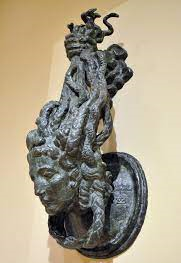Museum Guards Decide

Our ability to mitigate threat is built on awareness, it’s the first important step for detection which then leads to deterrence and deployment. It seems obvious that those who are closest to a protected environment would know it best. Your postal worker is the first to recognize a new feature in the neighborhood. The local barista knows her regulars and therefore recognizes her 'irregulars.' But somehow, sometimes we ignore or discount the knowledge of those on the ‘front lines.’
In a lovely twist, the Baltimore Museum of Art (BMA) enlisted its own security officers to act as curators for a new show entitled Guarding the Art. Seventeen officers opted to participate in the exhibition program, not only selecting pieces from the Museum’s collection but also helping to research, design the floor plan, develop materials and more. Each piece was accompanied by a curatorial statement where the officer explained their choice.
In an article from Art and Object, one of the museum’s Directors said “Our security officers spend more time in our galleries and living among our collection than any other staff within the institution … It is their perspectives, their insights, and their relationships with the art and daily interactions with our visitors that will set the stage for Guarding the Art …”
It’s because of the value of an officer’s connection to their post and its environment that Chameleon consultants promote security procedures that have officers thinking independently (versus having to first report upwards to management before being allowed to act.)
Personal connection is also one of many factors that determine whether or not a security officer is suited to a job. When we consult clients about officer recruitment, training and retention, we note that the officer’s personal connection to the people he/she is protecting is super important. Afterall, we are most likely to work hardest to safeguard people and things we care about.
 The curatorial experience of the museum officers underscores this idea. For example, one officer Michael Jones chose the Head of Medusa (a bronze door knocker) by Emile-Antoine Bourdelle not just because he was interested in the story behind it but because of his personal experience guarding the piece. On post, he was continually telling museum visitors who were trying to touch it to please keep their hands to themselves. So, in his installation he placed the work of art inside a glass case of his own design and aimed a security camera at it. This way he figured that he could finally stop worrying about it getting broken or mishandled.
The curatorial experience of the museum officers underscores this idea. For example, one officer Michael Jones chose the Head of Medusa (a bronze door knocker) by Emile-Antoine Bourdelle not just because he was interested in the story behind it but because of his personal experience guarding the piece. On post, he was continually telling museum visitors who were trying to touch it to please keep their hands to themselves. So, in his installation he placed the work of art inside a glass case of his own design and aimed a security camera at it. This way he figured that he could finally stop worrying about it getting broken or mishandled.
